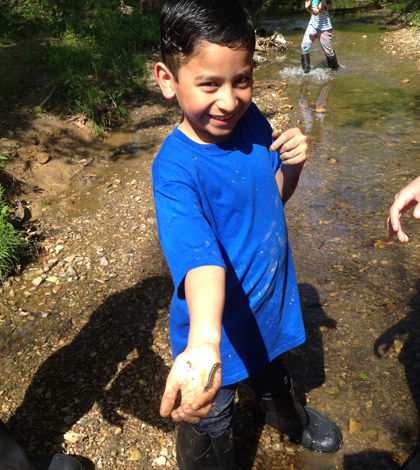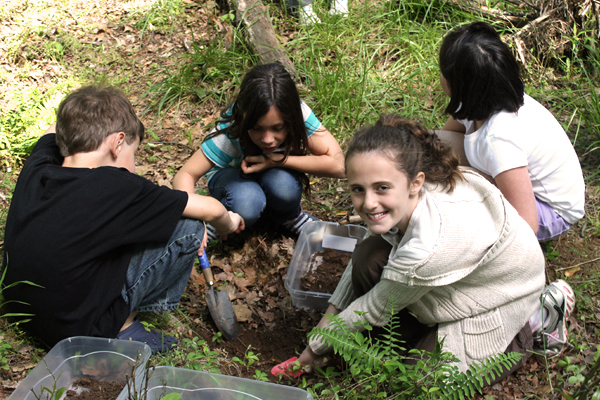Creek Freaks program educates students in stream and watershed science

For teachers looking to integrate hands-on environmental education into their lesson plans, the Izaak Walton League of America’s Creek Freaks program can make that a little easier.
This stream and watershed science program comes with a built-in curriculum with an eye toward education standards. There’s even a jet-setting coordinator ready to train teachers and informal educators in the program’s classroom and outdoor activities.
“I run Creek Freaks training workshops wherever I’m needed or wanted,” said Erin Johnson, a clean water fellow with the Izaak Walton League. In the past year, she’s hosted workshops and conference sessions in New York, Iowa, California and Virginia, to name a few. “If teachers are interested in bringing the training to their area, we can make that happen,” she said.
In those two-day workshops, Johnson first leads educators through classroom activities that the U.S. Bureau of Land Management and University of Wisconsin-Extension designed to relate to national science education standards. Next, she shows them the ropes of the stream monitoring segment based on the same protocols of Save Our Streams, the Izaak Walton League’s volunteer water quality monitoring program.
By the time the workshops are through, the trainees are ready to lead their own students through a curriculum that teaches important scientific concepts while connecting kids to their local environments.
“Just knowing that those places are there — they’re in their community,” Johnson said. “They might be hidden, but it’s a fun place to go and explore.”
The classroom activities (some of which work just as well outdoors) cover topics such as stream channel morphology, non-point pollution and even nutrient filtration by vegetation in riparian buffer zones. They present those topics for students ages 10 to 14 through interactive models that make the science easy to understand.

Several activities have students work with soils. (Credit: IWLA)
For example, the “Putting on the Brakes” activity has students build their own stream channel in a box using modeling clay, adding pipe cleaners and popsicle sticks to create roughness elements. Then they “race” marbles down their channels to see whose goes the slowest, showing that a complex channel slows water and curbs bank erosion. In another activity, students build model watersheds, dusting some areas with Kool-Aid mix to represent fertilizer and chocolate sprinkles to represent livestock or pet droppings (“Everyone’s favorite,” Johnson said).
The activities give students a base of understanding for when they head to the actual creeks for monitoring. They’ll assess biology by collecting, sorting and identifying macroinvertebrates and calculating a water quality score from the results. They’ll use colorimetric strips to test for chemical constituents like nitrates and phosphates. They’ll take physical measurements like width, depth and velocity.
Though the Creek Freaks training program covers the full curriculum, teachers and educators aren’t obligated to adopt every piece of it. They’re free to pick and choose elements and adapt them to fit their needs.
“If you find one activity that works for you, go ahead and incorporate it,” Johnson said. “People are appreciative that they don’t have to call it Creek Freaks or do the whole thing, but they can take what works from it.”
Although with a name like Creek Freaks — proposed by a student for a naming contest — it’s hard to imagine calling it anything else.
Top image: The Creeks Freaks program gets students onto local streams. (Credit: IWLA)




0 comments